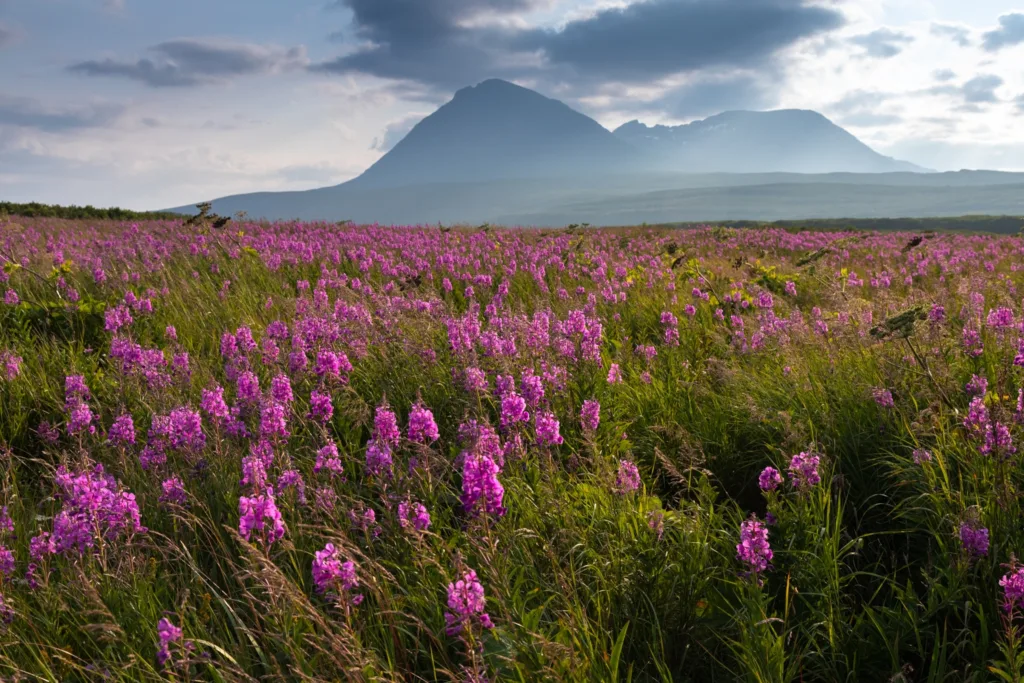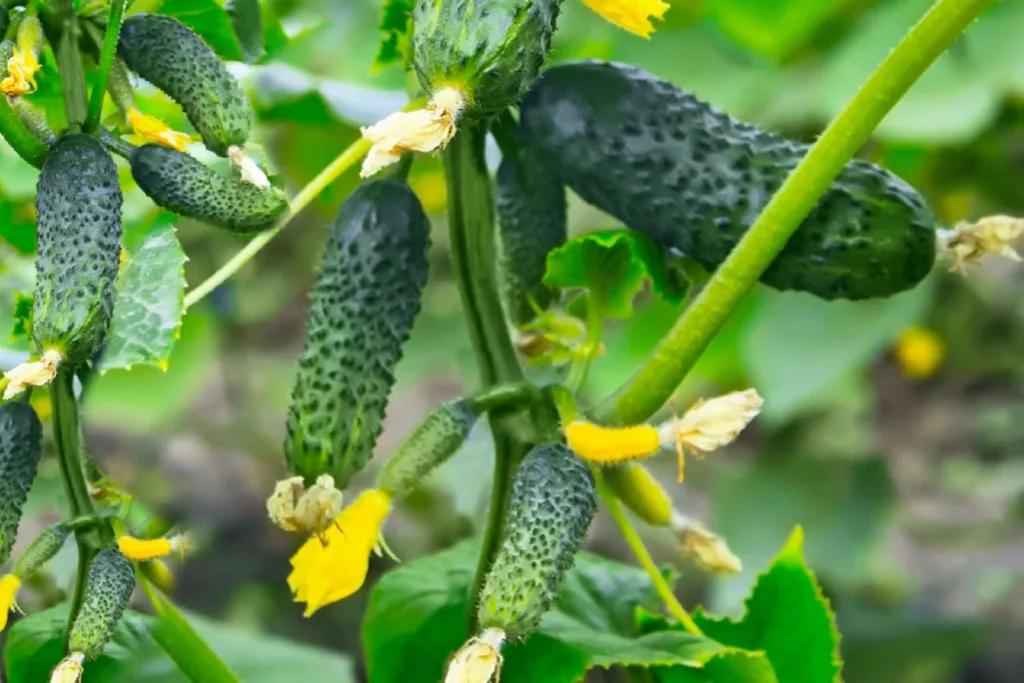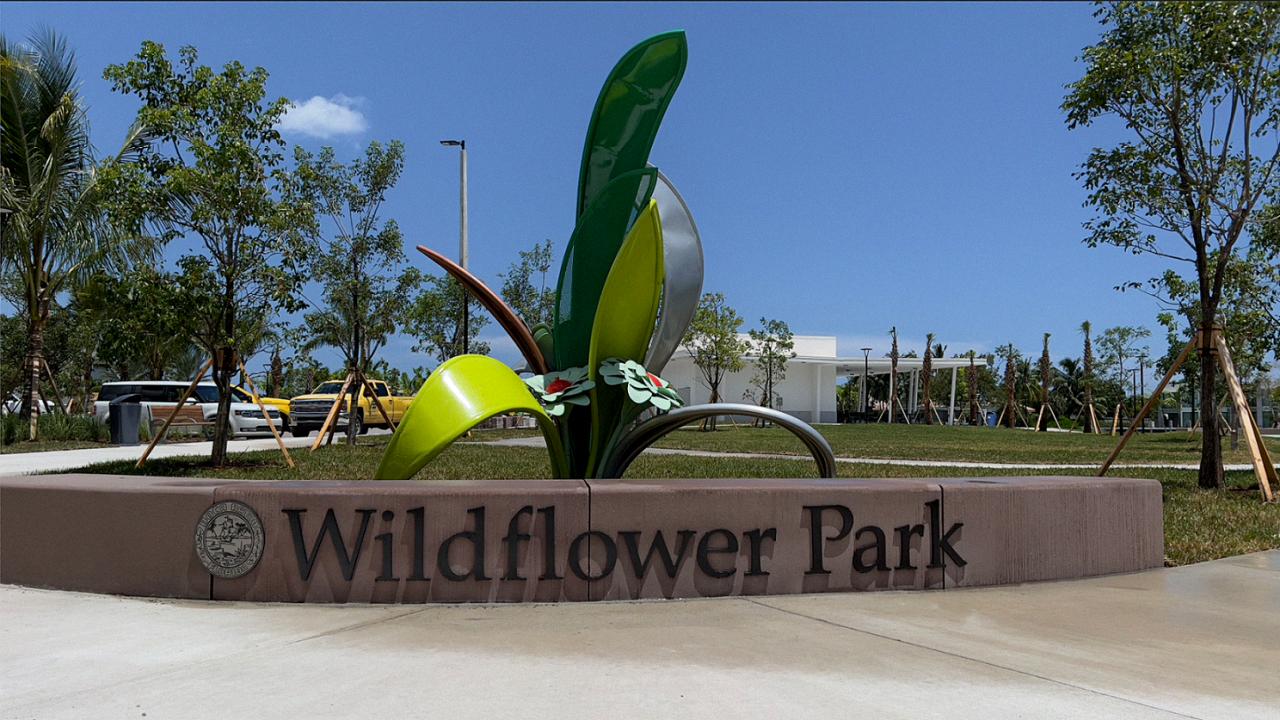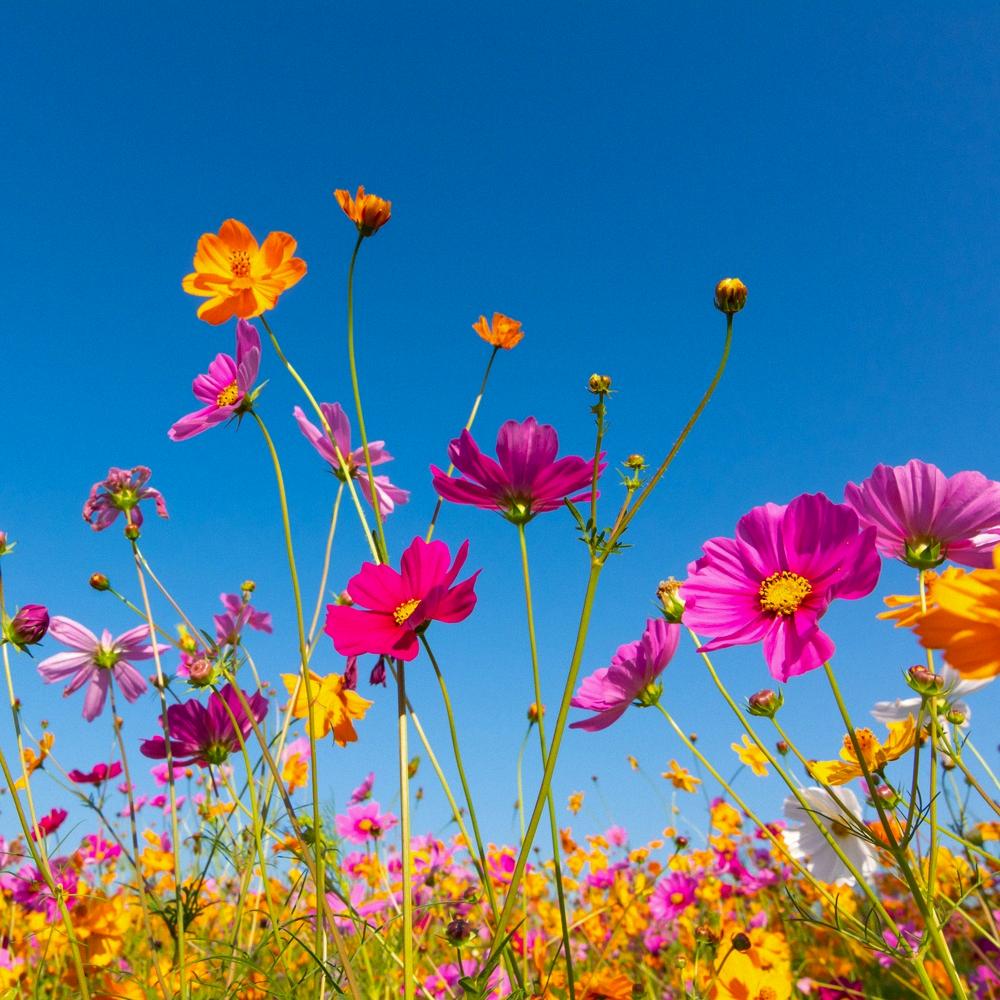Transplanting wildflowers is a great way to add beauty and interest to your garden. Wildflowers are known for their vibrant colors and unique characteristics. However, some people may be hesitant to attempt transplanting wildflowers as they are not sure how it should be done properly.
The first step in transplanting wildflowers is to choose the flowers you would like to transplant. Choose flowers that have strong root systems so they will survive the move and can easily take root in their new home. Once you have chosen the flowers, dig deeply around each one and make sure not to sever the tap root. Gently lift the sapling out of the ground, making sure plenty of roots and soil are attached before carrying it to its new location.
Next, prepare a spot for your new wildflower garden by loosening up the soil with a spade or trowel before planting your new addition. Make sure that this spot has adequate drainage as well as enough sun or shade depending on what type of flower you have chosen (some do bettr in full sunlight while others prefer more shade). After this is done, place the plant into its pre-dug hole and firmly press down around it so that it is held securely in place. Water generously and make sure that water runs freely away from the area when finished, ensuring that no water pooling occurs around the newly transplanted flower(s).
Wildflowers come back year after year once they become established, but there are several methods of propagation which can help increase their numbers quickly over a short period of time. These include seeds, cuttings, and divisions. For those who want an instant effect, sowing seeds directly into the ground is often successful; however this method requires patience as germination can take up to four weeks or more depending on species. Cuttings provide faster results but require careful handling; use sharp pruners or scissors when taking cuttings from existing plants as this will help reduce shock to them during transplantation. Lastly, divisions can help increase numbers quickly but should only be used for mature plants as young ones may not survive being split into multiple pieces.
Transplanting wildflowers does require some patience and care but is overall a rewarding experience for anyone hoping to add some vibrant color to their garden!
Transplanting Wild Plants
To transplant a wild plant, it’s important to take special care not to damage the root system. First, dig around the plant uing a spade or shovel to loosen the soil and avoid severing the tap root. Then, carefully lift the sapling out of the ground with as much of its root system and soil attached as possible. Lay it on a piece of newspaper or plastic and carry it to its new location. Finally, place it into the pre-dug hole and refill the area with soil. Make sure you water your wild plant regularly in its new home to ensure successful transplantation.

Transplanting Wild Daisies
Yes, you can transplant a wild daisy. Depending on the species, they may be hardier and more likely to survive being transplanted than cultivated varieties. When transplanting a wild daisy, it’s best to do so in the fall or early spring months when the plant is dormant. Make sure that you dig up the entire root ball of the daisy, including any rhizomes or stolons that may have spread out from it. Be careful not to damage any of the roots during this process. Plant your wild daisy in moist soil with good drainage and water it thoroughy after transplanting. It’s also important to provide plenty of sunshine for your new daisy and give it time to adjust. With proper care, your wild daisy should be able to thrive in its new location!
Do Wildflowers Reappear Year After Year?
Yes, wildflowers will come back year afer year once established in an area. Native annual species will often reseed themselves from the previous season, while native perennial species will return each spring from their roots. To ensure the best chances of seeing wildflowers return, it is important to select native varieties and to provide them with the proper conditions for growth, such as adequate sunlight, well-drained soil, and minimal competition from weeds or other plants. By providing a healthy habitat for wildflowers to thrive and reseed each year, you can enjoy the beauty of their blooms for many years to come!
Can Cuttings Grow Wildflowers?
Yes, wildflowers can grow from cuttings. This is a reliable and cost effective way to propagate wildflowers as long as you have access to the right materials. To get started, take a cutting of a healthy stem from an existing plant that is 2-3 inches long. Make sure to remove any leaves or buds from the cuttings. Dip the cutting into rooting hormone and place it in moist potting soil or vermiculite and keep it in a warm area with indirect sunlight. Water regularly and withn 6-8 weeks you should see new roots starting to form. When the roots are established, transfer the cutting into its own container with fresh soil and give it plenty of water and sunlight for it to begin growing.
Plants That Cannot Be Transplanted
Many plants cannot be transplanted successfully due to their sensitivity to disruption of their root systems. These include root crops such as carrots, beets, turnips, and potatoes; corn; cucurbits (squash, cucumbers, melons); and beans/peas. In general, any plant whose roots have become established in the soil should not be disturbed by transplanting. Attempts at transplanting can result in damaged and stunted growth, or even death of the plant. Additionally, plants that are stressed from drought or disease may not survive a transplant. If a gardener is unsure whether a plant can be transplanted successfully, it is best to err on the side of caution and leave it in place.

Transplanting Wildflowers in the Fall
Yes, you can transplant wildflowers in the fall. It is a great time to do so becase the cooler temperatures and increased rainfall make it easier for the flowers to establish new roots. Before you start transplanting, make sure to prepare your soil by loosening it with a shovel or garden fork. This will help give the flowers a good foundation for growth. Water the transplanted area well and then mulch around the plants to protect them from extreme temperatures and conserve moisture. Be sure to water regularly throughout fall and winter so that the plants can adjust to their new environment. Additionally, deadhead any spent blooms so that energy isn’t wasted on seed production, allowing more energy for root development.
Do Wild Daisies Have the Ability to Reseed Themselves?
Yes, wild daisies do reseed themselves. As the petals of the flowers dry out, they will form seed heads. These can be left on the plant to drop their seeds and sow themselves naturally, or you can collect the flower heads in a paper bag and leave them to dry for a week before collecting the seeds for replanting in other areas.
Do Wild Daisies Reappear Annually?
Yes, wild Shasta daisies do grow back each year. They are a perennial flower, meaning that once established, they will return every spring and early summer to bloom until early fall. These daisies are native to Europe and have become naturalized in North America. They thrive in full sun and moist soil with good drainage. The flowers typically reach a height of 12-24 inches and spread up to 18-24 inches wide. They can be propagated through division or by collecting the seeds from the spent flowers in the fall and planting them in the spring.
Maintaining Wildflowers
To maintain wildflowers, it is important to create a habitat that is conducive to their growth. Prepare the soil by removing any large rocks or weeds and adding compost to increase fertility. Plant wildflower seeds in late fall or early spring when temperatures are cool. Make sure the area receives at least 6 hours of direct sunlight daily. Water regularly, especially durng dry periods, and avoid using chemical fertilizers or herbicides. If needed, lightly prune the flowers to promote growth and flowering. Mulch around the plants to retain moisture and suppress weeds. Finally, deadhead blooms as they fade to encourage additional blooms throughout the season.

Source: wptv.com
What To Do With Wildflowers At The End Of The Season
At the end of their season in September or October, it’s a good idea to cut back wildflowers. Cut them down to about 15cm from the ground. Before you do this, make sure to collect any seeds that you want for future planting! Annuals will have finished their life-cycle at this point, so it’s ok to discard them. Perennials, on the other hand, will look better in their second year if they are trimmed back at the end of this season. This will help them get a fresh start in the spring and encourage more blooms next year.
What to Do With Wild Flowers at the End of the Season
At the end of the season, it is important to take care of your wildflowers. Pruning them back one-third to half their height will help keep them healthy and promote new growth in the spring. Pruning shears or a string trimmer can be used for this purpose. Alternatively, you can mow the wildflowers if desired, but consider leaving a small patch of wildflowers unmowed or leaving the mowed stems and seed heads in place throughout the winter and then rake them up in spring. If you choose to leave some of the stems and seed heads, this will allow for more nutrients to be availale for new growth when warmer temperatures arrive again.
The Benefits of Cutting Back Wildflowers in Winter
Wildflowers should not be cut back during the winter months. Not only do they continue to provide beauty in the cold months, but their seed heads can also help with re-seeding come springtime. If you decide to cut back your wildflowers for any reason, it is best to do so in early spring before the new growth has started. This will give the wildflowers ample time to re-grow and bloom again in the warmer months. Cutting them back too late could cause damage and stunt their growth for the season.
Can Wildflowers Grow Without Planting?
No, wildflowers won’t grow if you just sprinkle them. To ensure successful growth, it’s important to start by preparing the soil for planting. First, remove existing grass and weeds from the area you want to plant, either by hand or with a tiller. Then, till the soil to a depth of at least four inches and mix in some organic matter like compost or fertilizer. Once your soil is ready, scatter the wildflower seeds over the entire surface, making sure they are distributed evenly. Then lightly rake the top layer of soil to cover the seeds just enough that they won’t be exposed to birds or other animals that may eat them. Finally, water the entire area unil it is moist and keep it moist until you see plants emerging from the soil.

Source: brambleberry.com
Planting Cuttings Directly Into Soil
No, it is not recommended to put cuttings straight into soil. Propagating directly in soil can be difficult to manage within the home environment due to the need for a balanced combination of soil moisture, air flow, and humidity. It is much easier to propagate cuttings in water first, which allows you to establish roots before transferring them into soil. Once the roots have formed, you can then transfer your cuttings into soil and continue caring for them there.
The Ability of Wildflowers to Self-Seed
Yes, wildflowers do self seed. This means they can reproduce without any help from humans. The process works by the flowers producing seeds that are released into the environment and if conditions are right, these seeds will then germinate and grow into new plants. However, this process is not always successful and can sometimes benefit from a helping hand, such as cutting the flowers down or mowing them on a high setting to assist in their dispersal.
Conclusion
In conclusion, wildflowers can be successfully transplanted with the right techniques and at the right time of year. By carefully digging aroud the plant, avoiding severing the tap root, and placing it into a pre-dug hole with plenty of roots and soil attached to it, you can transplant wildflowers with ease. Once established in their new environment, many native species will return year after year, making them an excellent choice for those looking to create beautiful sunny borders or shaded woodlands. With the three main methods of propagation – seeds, cuttings and divisions – you can easily produce great numbers of plants in a relatively short period of time. All in all, transplanting wildflowers is a great way to create beautiful natural environments.
